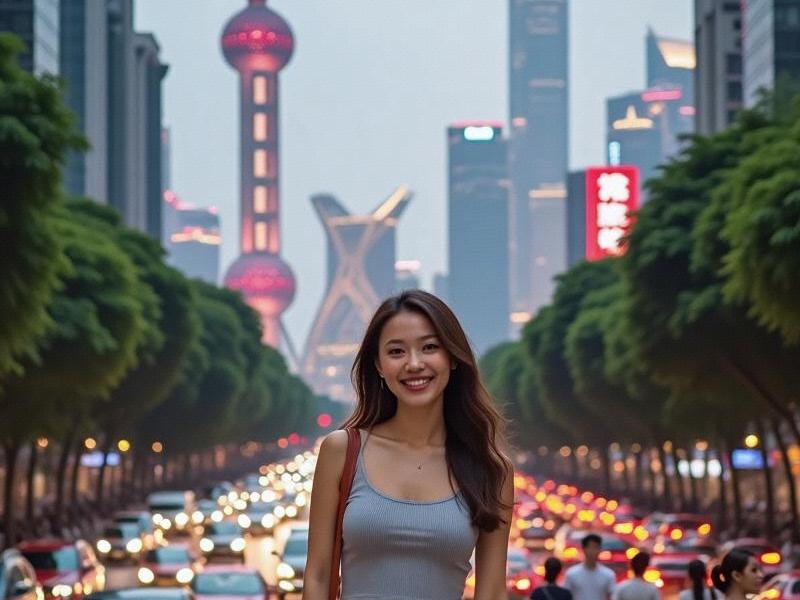Shanghai's Cultural Renaissance: How China's Global City is Reinventing Its Creative Soul
⏱ 2025-07-01 00:41 🔖 上海娱乐对对碰
📢0℃

The rhythmic clang of metalwork has faded from the red-brick warehouses along Shanghai's West Bund, replaced by the vibrant chatter of art enthusiasts exploring the latest exhibition at the Tank Shanghai art complex. This metamorphosis from industrial relic to cultural landmark symbolizes the city's broader creative renaissance - a deliberate effort to balance rapid modernization with cultural preservation.
Shanghai's cultural transformation is staggering in both scale and ambition. Since 2020, the city has:
1. Converted over 1.2 million square meters of disused industrial space into cultural venues
2. Established 17 new designated "creative clusters" across urban districts
3. Increased annual cultural spending by 240% to ¥8.7 billion
4. Attracted 83 international art galleries to open Asian headquarters
"The vision is clear," says cultural commissioner Lin Yue at the newly reopened Shanghai Art Museum. "We're building what we call 'the three circles of culture' - preserving heritage in the inner city, developing contemporary hubs along the Huangpu River, and creating experimental spaces in former industrial zones."
The statistics reveal this strategy's success. Shanghai now hosts:
- 1,872 registered art galleries (up from 892 in 2015)
夜上海最新论坛 - 43 theater companies producing original works
- 28 resident foreign orchestras and dance troupes
- 156 independent bookstores specializing in niche subjects
Historical preservation forms one pillar of this renaissance. The Shanghai Municipal Government has:
- Restored 4.3 km of the historic Bund waterfront
- Converted 1930s shikumen lane houses into boutique cultural spaces
- Established protective status for 1,248 heritage buildings
- Created "living museum" neighborhoods where traditional crafts thrive
Contemporary development pushes equally bold boundaries. The West Bund Museum Corridor, stretching 8.5 km along the Huangpu River's south bank, now houses:
- The Pompidou Center's first Asian outpost
上海龙凤419官网 - The Yuz Museum's cutting-edge contemporary collections
- The Long Museum's dual venues for modern Chinese art
- The Star Museum's digital art experiences
"Shanghai offers something unique," notes French curator Élodie Royer at the recently opened Qiantan Modern Art Space. "Nowhere else blends 1930s jazz age glamour with such fearless contemporary experimentation."
The economic impact is profound. Creative industries now contribute 13.2% of Shanghai's GDP (up from 7.8% in 2015), employing over 1.2 million workers. Key growth areas include:
- Digital media production (¥87 billion annual revenue)
- Architectural design services (¥64 billion)
- Performance arts (¥38 billion)
- Cultural tourism (hosting 42 million arts-focused visitors annually)
上海娱乐 Social transformations accompany this cultural boom. Young Shanghainese increasingly pursue creative careers, with applications to art colleges rising 180% since 2018. "My parents wanted me to study finance," says 22-year-old illustrator Mao Yuxin. "But Shanghai's creative energy showed me art could be a real career."
Challenges persist, particularly in balancing commercialization with artistic integrity. Recent controversies include:
- Developers displacing artist communities from affordable spaces
- Censorship debates around politically sensitive exhibitions
- Concerns about "cultural Disneyfication" in tourist areas
Yet the momentum continues. Upcoming projects include:
- The 2026 Shanghai International Culture Forum
- Expansion of the Shanghai Biennale into a year-round program
- Development of Chongming Island as an ecological art destination
- Launch of Asia's largest public art database
As neon reflections dance on the Huangpu River at night, they illuminate a city rediscovering its creative soul while writing a bold new cultural chapter - one that may well define 21st century Asian artistic identity.
【时尚观察】从"上海滩"到"国际秀场":解码本土时尚品牌的破圈之路《吴淞江算法:长三角水系的数字孪生》
潮汐密码,智能堤坝,数字圩田,运河区块链,虚拟水网The Shanghai Beauty Revolution: How China's Most Cosmopolitan City is Redefining Asian FemininityShanghai's Feminine Revolution: How the City's Women Are Redefining Chinese ModernityShanghai and the Yangtze River Delta: China's Economic Powerhouse Reimagined弄堂深处:上海城市肌理的百年叙事诗《霓虹基因:上海女子的数字时尚史》
旗袍算法,弄堂区块链,沪语AI,石库门NFT,摩登女郎元宇宙Neon Renaissance: How Shanghai's Entertainment Clubs Are Pioneering Asia's Nightlife RevolutionShanghai After Dark: The Sophisticated Evolution of China's Premier Nightlife EconomyShanghai's Cultural Awakening: How the City Reinvented Its Creative Soul for the 21st Century
《潮汐之间:上海与周边城市的量子纠缠》弄堂与云端:上海美女的"双面魅力"与文化密码从"海上花"到"云顶宴":上海娱乐会所的世纪变迁与文化密码《弄堂晨曦中的她世纪》start
《沪上梧桐年轮志》
树皮皲裂度,落叶堆积量,遮阳覆盖率,鸟巢密度,记忆点强度start
《霞飞路时尚基因图谱》
旗袍开衩高度,高跟鞋跟数,烫发卷度,口红色号,记忆点强度start
《旗袍褶皱的光学编码》
织物纤维,光线折射,色彩心理学,身体语言,记忆点强度start
《百乐门的分子料理》
味觉受体,风味化合物,呈味阈值,味觉适应,味觉记忆start
《苏州河的拓扑诗学》
波纹分形,渡轮混沌,桥墩流形,霓虹突变,数字同胚外滩风云:从"冒险家乐园"到金融心脏的百年蜕变

